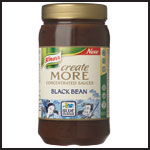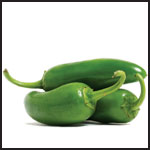Ethnic food – Love of the new
Our appetite for foreign flavours is no longer satisfied by just Indian and Chinese - we are looking further afield. And London in particular is now home to almost every type of cuisine on the planet. Fiona Sims reports
Armoured catfish eggs add a briny kick to Amazonian palm heart tofu and a smoked pork broth; sliced raw scallops come with fat caviar-like cushuro seaweed, harvested from a Peruvian lake 3,500m above sea level; and a dessert arrives with an ice-cream made from copoazu, a jungle fruit with a hard brown shell and a luxurious custard fruit-like interior. Where are we? In Lima, Peru, of course - in Malabar, one of Lima's hottest restaurants. Why should you care? Because Peruvian cuisine is hot stuff. If you don't already know your ceviche from your causas, you soon will, as this spring no less than three Peruvian restaurants will open in London.
The first opened last month in Soho, called Ceviche, named after the country's famous lime-marinated seafood salad, from Martin Morales, a Peruvian former Apple and Disney executive. A few weeks later cue Lima London, a joint venture between sibling Peruvian restaurateurs Jose Luis and Gabriel Gonzalez and top Lima chef Virgilio Martinez. And finally, there's Coya, opening on Piccadilly, from Arjun Waney, the man behind London's hugely successful Asian-inspired restaurants Zuma and Roka, which have been rolled out internationally.
Peruvian cuisine is already big in the USA, with ceviche now being served up in fine-dining temples such as New York's Daniel. And top international chefs are flocking to the country and returning home enthused - El Bulli's Ferran Adrià was so inspired after a visit last autumn he made a film about the cuisine.
Yes, as ethnic cuisine influences go, Peru is expected to make a splash - though how much of this will filter down to the high street is anybody's guess. Marks & Spencer's "Inca potatoes", launched earlier this year - with a quicker cooking time and an intense colour and flavour they make a great rösti, in case you are wondering - could just be the start.
According to the latest research from Mintel in its Ethnic Foods Market Report 2011, 62% of consumers now enjoy foreign food, with ethnic foods now a staple element of the population's diet. We scoff on average an ethnic meal once a fortnight, says Mintel, with Indian cuisine still leading the way, enjoyed by 71% of consumers, beaten only by the Chinese take-away - with the term ethnic, of course, up for constant discussion (see page 44).
However, it is Mexican food - or Tex-Mex, to be more precise - that is making the most dramatic impact on UK consumers as the fastest-growing cuisine, according to market analyst IRI's Grocery Outlets report, right behind Chinese and Indian cuisines, growing by 9.8% year-on-year.
"While they may not be able to achieve quite the same level of authenticity, there's no reason why non-ethnic restaurants can't get in on the act and introduce their own variations on ethnic fare," reasons Christina Hardiman, marketing manager for Mars Foodservice, with brands including Uncle Ben's and its Deep South-inspired sauces, from Mexican Salsa to Hickory BBQ.
"In the commercial market, it's not feasible to use the same traditional techniques as the ancestral communities of Mexico, and our ready-to-use sauces are not laying claim to this level of authenticity. But what they do is explore flavours used in Mexican cooking and give consumers a taste of the country and eating style adapted to the British palate."
The new generation of street food vendors are also doing their bit to spread the word about ethnic cuisine. In the USA, the taco truck has given birth to a whole new style of cooking, a mash-up of Korean and Mexican food, introducing Americans to dishes such as short-rib tacos and kimchi quesadillas, not to mention Japanese hot dogs, smothered in soy mayo, teriyaki sauce and nori.
And where US food trends go, Britain usually follows. Gourmet food trucks have taken off over here in the capital - taking the likes of the hot dog away from the greasy burger van and reworking it into something smart. So popular have food trucks become that some of their creators have started moving into permanent locations - the Meatwagon, with its hugely popular cocktail and burger joint, Meat Liquor, off Oxford Street; Pitt Cue and its superior Southern-style ribs, now trading out of a chic corner café in Covent Garden.
Conversely, the posh food truck vendors are influencing restaurateurs - Bubbledogs, specialising in gourmet hot dogs and grower Champagnes, will open in Fitzrovia this summer, with chef James Knappett, at the helm.
In fact you can blame, or applaud, North America for a whole host of food trends certain to hit our shores in the coming months. Stand by for the gourmet doughnut, with fillings such as crème brûlée. Mars Foodservice and others might want to brace themselves.
Five suppliers share their ethnic food predictions
Unilever Food Solutions, and its Knorr brand, is focusing on the Orient. It has hooked up with the fastest-growing Oriental retail brand, Blue Dragon, and come up with a range of professional pastes, concentrated and ready-to-use sauces, from Thai green curry to black bean sauce.
Says category manager Sarah Branagan: "Asian-inspired dishes remain one of the most popular cuisines to be eaten out of home, and with more consumers keen to try street-food concepts, it's vital that chefs are equipped to deliver an authentic taste of the Orient."
Tilda - Mexico
Tilda Foodservice reports a roaring trade with Mexican restaurant chains, some of which are moving away from the usual long grain rice to basmati. "There has certainly been a rise in interest in South American food generally, with Mexican food flying the flag.
"High street Indian and Chinese restaurants have suffered because they have downgraded their ingredients to try and offset rising food costs," says Mark Lyddy, head of food service for Tilda, who thinks this is just the start of other ethnic menu-themed chains.
A Caribbean-style curry has become a bit of a thing for Quorn Foods. The ingredient's ability to take on flavours and spices shines in a Jamaican Jerk recipe, which has been going down a storm at Radyr Comprehensive School in Cardiff. Tony Davison, commercial manager food service, says: "Consumers are becoming very adventurous with their food choices, opting for cuisines such as spicy Mexican meals and ‘light bite' Japanese dishes. And as consumers continue to be influenced by cuisines from further afield we're seeing new trends emerging through menus, such as Caribbean food."
Pritchitts - Thailand
Renowned Indian restaurant owner and chef Cyrus Todiwala is a big fan of Pritchitts' Millac Gold, and uses it as a replacement for fresh cream in his lighter take on traditional dishes. Millac Coconut Cream is also selling well for the company. Simon Muschamp, head of marketing at Pritchitts, says: "Caterers shouldn't be daunted by the prospect of introducing ethnic cuisines on menus. Chinese and curry remain the two most popular ethnic cuisines with diners, according to Mintel, and yet with a burgeoning and booming ethnic foods category more and more cuisines are emerging as diners become increasingly well-travelled, with dishes from Mexico, Thailand and Vietnam growing in popularity."
What Andrew Pester of Fox's Spices doesn't know about spices isn't worth knowing. The family-run company now lists more than 200 spices, seeds, leaves, roots, pods and herbs from around the world, and is continually adding to its vast collection of mixes, sauces and blends. Mexico is taking off - a new range of jalapeño chilli sauces will be available next month - and there's a growing demand for North African flavours, but Indonesia is his latest focus. "With its delicate flavours and medium heat it is vastly underrated in the UK," declares Pester, who is currently working on an Indonesian stir-fry noodle dish called Bami Goreng.
What is ethnic food?
One look in our weekly shopping basket will show us that much of our food originally came from another country. The globalisation of food began centuries before the term came into use, from potatoes and coffee to tomatoes and tea.
But with the world's financial markets in turmoil, globalisation has become a dirty word, blamed for destroying communities and widening the gap between rich and poor, with fast-food giants representing all that is bad about globalisation to its critics.
But is anything actually foreign any more?
London prides itself on its cultural diversity and is home to almost every type of cuisine on the planet. Once considered ethnic, Thai food has assimilated itself into the mainstream, as we tuck into green chicken curry with the same vigour as we do fish and chips. And if the recent craze for Korean black garlic is anything to go by, then Korean food could go the way of Indian, Chinese and Thai, among others.
Korean food already has a huge following in the USA, where there are hundreds of Korean restaurants and where Korean chefs have made a name for themselves, in both their native cooking and in top kitchens. Now Londoners have woken up to the cuisine with its growing number of Korean restaurants, its exciting flavours and authenticity a welcome antidote to the chain-dominated restaurant world.
So are we confusing ethnic with authentic? As high streets across the world rapidly develop into mirror images of each other, the celebration of distinct and different foods should become even more important.
Peruvian cuisine explained
Other classic Peruvian dishes include tiradito, the younger sibling to ceviche, with shades of carpaccio and a nod to sashimi. It is white fish sliced thinly and often seasoned with lime juice, chillies, ginger and coriander. There are anticuchos - barbecued marinated, skewered ox heart, and conchitas a la parmesana.
"Over the past decade just about everybody in Peru has been rediscovering their roots," explains Ceviche restaurant creator and native Peruvian Martin Morales. "We are replanting old varieties; street food sellers are becoming more popular; mid-range restaurants have ditched the pasta in favour of traditional cuisine; and high-end restaurants are refining traditional recipes."
The real Mexico
Think avocado ravioli stuffed with smoked chipotle-spiked shrimp mayonnaise, or venison rubbed with Yucatán oregano and dried burnt chillies served on puréed plantain. This is the kind of cooking on offer at top contemporary Mexican restaurant Pujol in Mexico City, and it's one of a brave new wave of Mexican restaurants that has put the country on the gastronomic map.
"The problem is, the world doesn't think about Mexican cuisine in terms of fine dining; they think of Mexican cooking as street food. We have to change that perception. Though it's true that street food is the closest to a Mexican's heart," says executive chef and owner Enrique Olvera.
In the vast central market of Abasto you'll find dozens of different chillies - Mexico has more than 100 different varieties - from the boxy, lantern-shaped habanero (the hottest) to the black-green, rough-looking chilaca. There are also plenty of tomatillos - small plum-sized light-green tart-tasting fruit in a papery husk, the foundation of most Mexican green sauces. Also a beet-shaped root called jícama, usually eaten raw with a squirt of lime; plus cactus paddles (nopal) stripped of their spiny nodes - often grilled and served with a steak; and an inky corn fungus called huitlacoche, destined for the champion of sandwiches, quesadillas; and, of course, corn galore - the staff of life for every Mexican.















